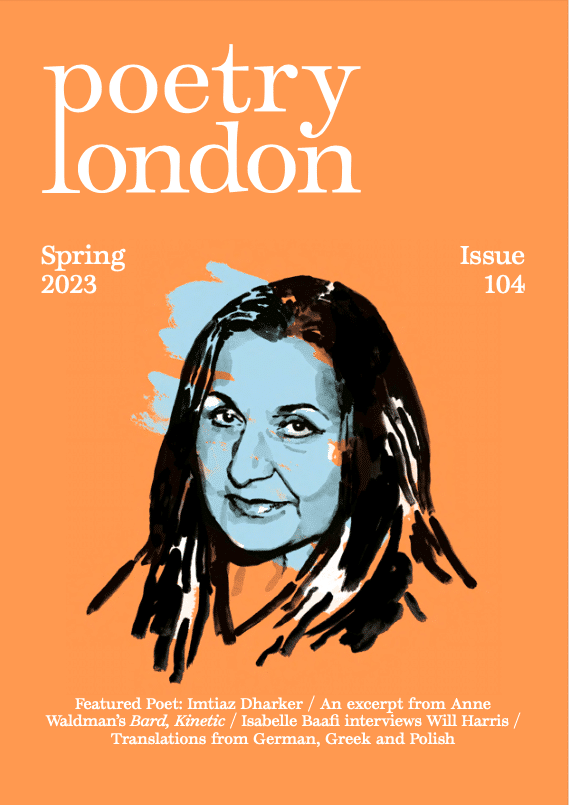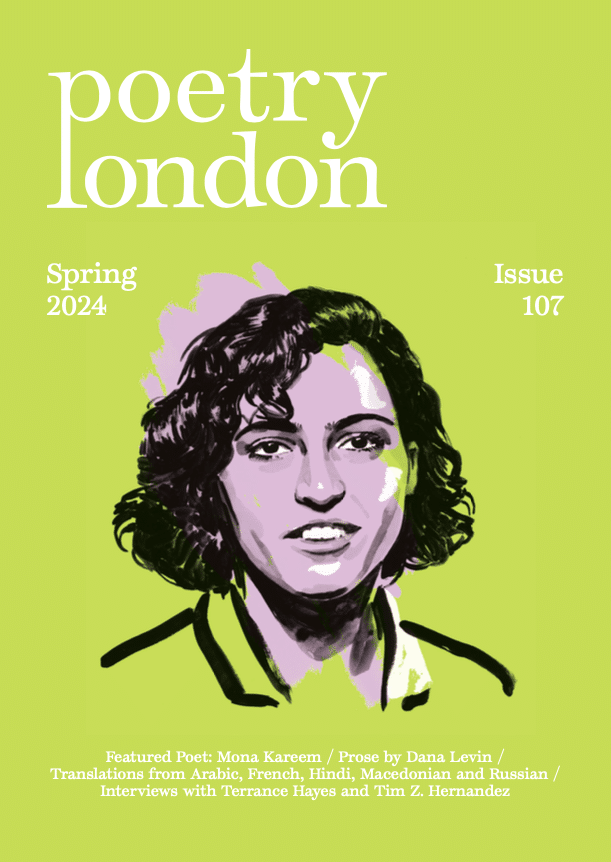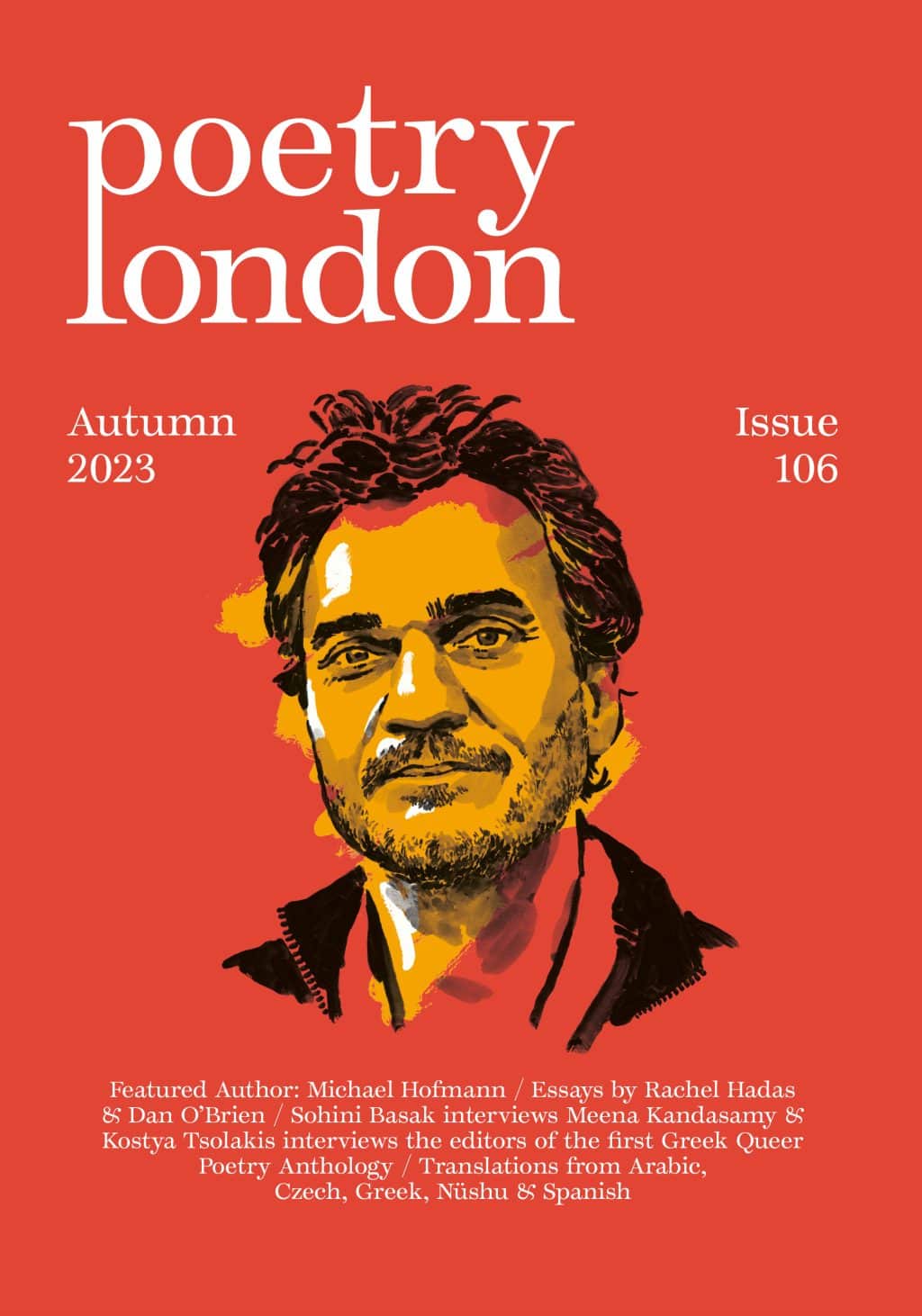A Hole in Time’s Glove
Francesca Peacock on three collections whose inventive mythmaking remaps historical landscapes
Francesca Peacock
-
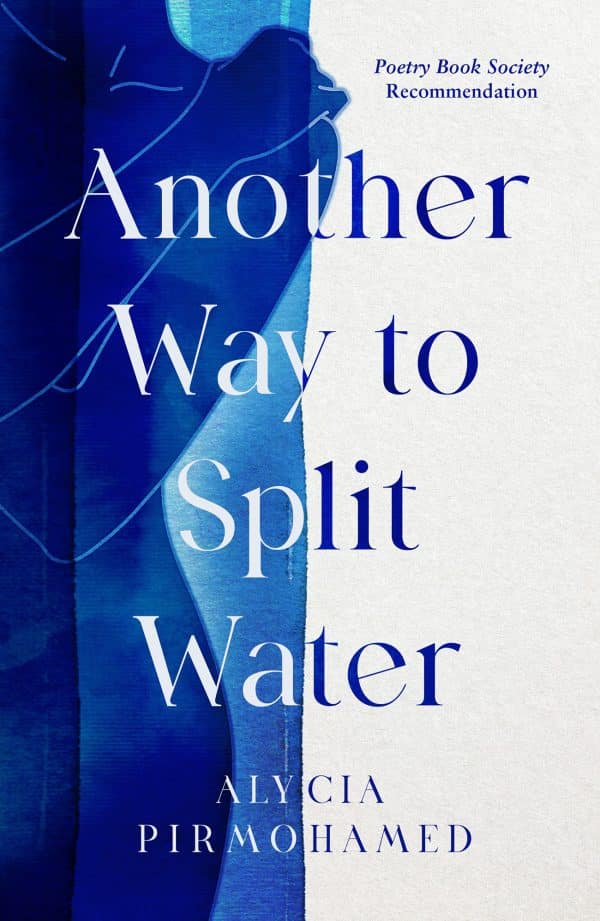
Another Way to Split Water
Alycia Pirmohamed
Polygon • £10 -
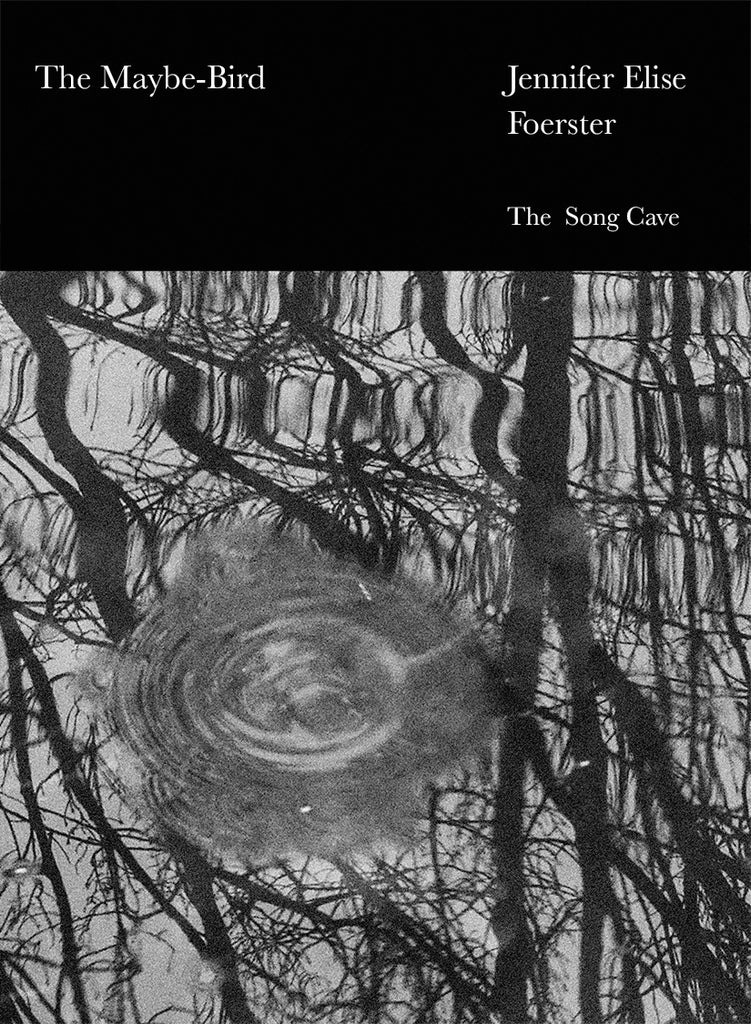
The Maybe-Bird
Jennifer Elise Foerster
The Song Cave • $18.95 -
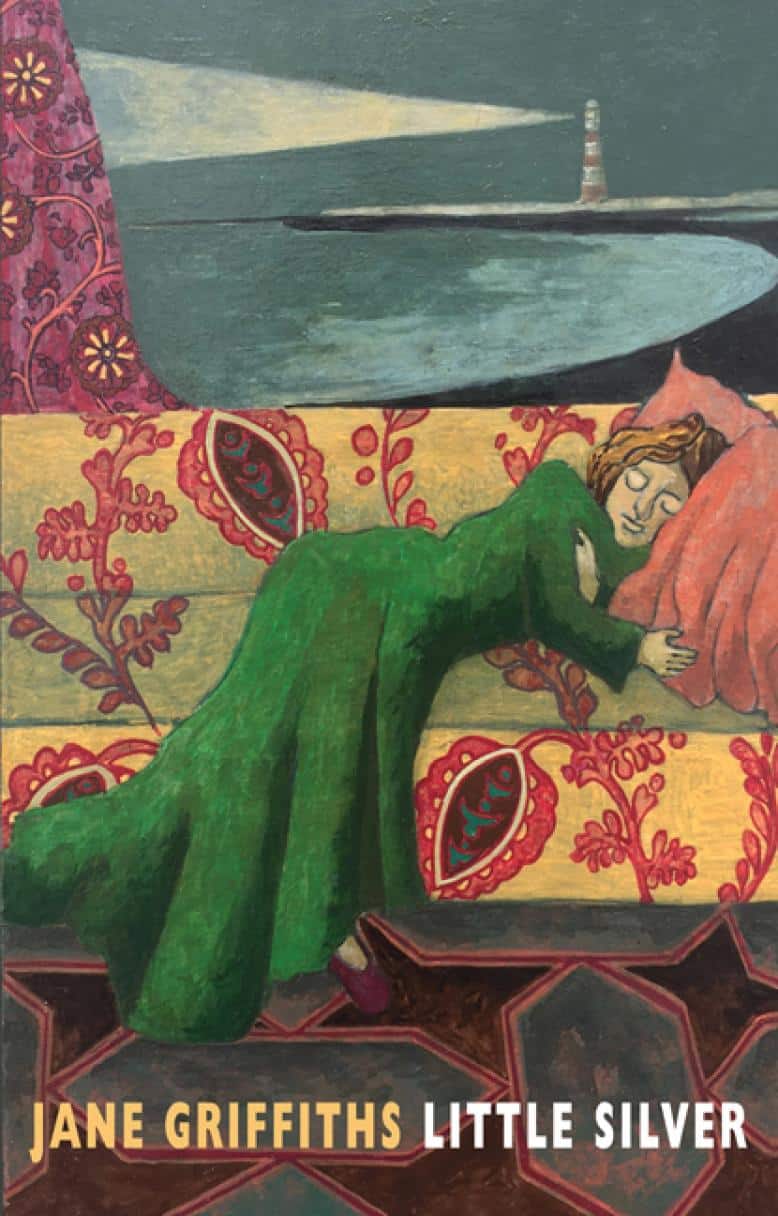
Little Silver
Jane Griffiths
Bloodaxe • £10.99
Do figs fold? Can you fold a fig without breaking it? Does its shape naturally double up and bend over itself? Forgive the fruit-based questioning, but it seems essential to the opening metaphor of Alycia Pirmohamed’s debut full-length collection, Another Way to Split Water:
Say the word dark translates to how I fold my body like a fig against a stippled moon.
It’s the first image of the first poem in the collection, ‘Faded’, but Pirmohamed’s language lacks power. The ‘word dark’ corresponds, in some way, to the speaker’s folded body. Interesting. But, this folded body is akin to ‘a fig / against a stippled moon’? Suddenly, the image has collapsed in on itself – folded, if you will. The metaphor is nothing more than a rhetorical flourish, and the rest of the opening poem – ‘Pull a string of sorrows from / my mouth’; ‘Hold my tasbih to my heart’ – fails to recover: there’s a fatal sense that Pirmohamed’s language does not, and cannot, correspond to any reality beyond itself.
Focusing on one poem is, perhaps, unfair: Pirmohamed’s collection is an intriguing series of meditations on religion, ancestral inheritance, and the mythological powers of the female body. She is an adept, twenty-first-century religious poet. In one particularly effective poem, she drags the genre into modernity when she describes reading ‘my morning prayers off the cracked / screen of my phone’ (‘I Want the Kind of Permanence in a Birdwatcher’s Catalogue’). The refrain of ‘yes, / I prayed today’ echoes across the lines of another poem, ‘Hinge’, in which the difficulties and anxieties of worship are made painfully clear:
planting my palms together has never felt like blossoming up the side of a mountain.
But just as Pirmohamed rejects the impossible, unknowable metaphors of religious devotion, she continually writes images of her own which are no clearer.
But her images are, she tells us, more than words:
Last week I titled another page with my body and surrendered every bending, splitting line of myself to the making
Once again, we return to the image of bending and folding, only this time it makes a little more sense: Pirmohamed maps her poetry onto the territory of the female body – her lines are, she tells us, her limbs. This identification of the body with literature reverberates throughout the collection, from lines like ‘I rinse in a bath of citations’ (‘After the House of Wisdom’) to the four-part poem ‘Persephone’s Crossings’ which retells the ancient myth through a woman who was ‘born into this story of selves’. There is something innovative and powerful here, as Pirmohamed stretches myth, language, and religion to tell a story of womanhood and female inheritance: ‘a lost country is made by its daughters’ (‘My Body is a Forest’). In Pirmohamed’s world, the female body knows no bounds: it can become ‘the fruit’ Persephone ate which trapped her in the underworld just as easily as it can become the Garden of Eden, the garden that Hawwa (the Arabic name for Eve) creates. Hawwa is ‘olivine / and zinc’ and has ‘unfolded her body / onto the earth’.
But, amidst these unfolding bodies of family history, re-told myths, and reconstituted heroines (in Pirmohamed’s version of the myth, Persephone longs for a ‘maine coon cat’ and ‘grandfather’s old records’) the problem of her imagery persists. Take this image from ‘Midnight Vessel Across the Great Sea’ as an example:
My body is the echo of her iambs a tradition that sieves right through my ancestor’s thread.
The metaphor begins with Pirmohamed’s favoured link between the body and literature – one that is echoed later in the poem when the speaker declares, ‘I am a remembrance / and she is my volta’. But, just as the image seems to be certain, solid, and understandable, it disintegrates with the words ‘a tradition that sieves / right through my ancestor’s thread’. Sieves hold an interesting place in Pirmohamed’s collection. The word is mentioned no fewer than five times, and refers to everything from Adam’s body when it is discovered by Hawwa – ‘his body is a sieve’ with flowers ‘slipping through’ – to the partial holes and knowledge of ‘counter-memory’. In Pirmohamed’s universe, the seemingly inconspicuous kitchen instrument seems to stand for something which is not quite whole, or that is flawed or undermined in some way. But in this poem, these resonances are only partly present. It is the only time Pirmohamed uses it as a verb rather than a noun: the ‘tradition’ of iambs has to make it through the small, purifying holes of an ‘ancestor’s thread’.
Metaphors are fiendish. They depend upon the properties of one object – in this case, a sieve – being transferred onto another object: here, the ‘ancestor’s thread’. This transference need not be visual: it must simply be understandable, or, at the very least, somewhat comprehensible. But in Pirmohamed’s lines, there is a problem. How can the ‘tradition’ of iambic poetry, either embodied or not, sieve ‘through’ something like a thread? None of the transferals – from the body to the tradition, or the sieve to the thread – make any linguistic or figurative sense. Instead of having an image about an inherited tradition of language and poetry, all that is left is a tangle; something that sounds like it should be a good metaphor or evocative image, but is ultimately an incomprehensible collection of words.
There’s a temptation to call this the ‘Ocean Vuong school of metaphor’: he is, after all, the premier poet of the type of image whose depths and metaphors are utterly meaningless after anything longer than a first glance. Pirmohamed is not quite on Vuong’s level, but there is, still – despite the richness of the collection and the breadth of her subjects – an unavoidable sense that her images are not quite whole, and that her language fails to convey what she intended.
Jennifer Elise Foerster is, like Pirmohamed, interested in mythology, history, and generational inheritance. Her third collection, The Maybe-Bird, is comprised of sequences of lyric poems which tell the stories of ‘explorers or Indian Agents’ in Oklahoma in the early years of American history. The collection opens with ‘Sixteen Shadows’ (poems made up from texts written by those who travelled to the Southeastern US between the sixteenth and nineteenth centuries), and the language of displacement (‘appropriate similar words / for Creek’), exploration (‘the country was rich / with mischief’) and genocide (‘The war appeared to be coming / to an end’) echo across the rest of the book.
As in Another Way to Split Water, Foerster is concerned with the link between landscape and the language used to describe it. But, instead of the link being natural or unavoidable, there is a tension here. The speaker in one of the ‘Sixteen Shadows’ declares, ‘I cannot language the tree / or point out the sun’s / strange amulets.’ In a collection saturated with Mvskoke – the language of the indigenous people of the Muscogee Nation of Oklahoma, who were forcibly moved during the Trail of Tears in the 1830s – this inability to ‘language’ the landscape marks the speaker out as a visitor, an intruder, a settler.
The bulk of the collection – the eponymous ‘The Maybe-Bird’ – is formed of an inter-connected set of four sequences of lyric poems: ‘Hvmken’, ‘Hokkolen’, ‘Tuccēnen’, and ‘Osten’ (meaning one, two, three, and four in Mvskoke). Each sequence is, like the earlier sequence ‘Sixteen Shadows’, made up of sixteen poems, but in this half of the book, Foerster writes in blank verse. Foerster’s subject is the landscape that surrounds her and the speaker’s changing relation to it as it shuttles between past and present, autumn and winter. She describes trains that cut through like a ‘parabola in snow’, gazelles ‘spray-painted on corrugated tin’, and kingfishers which drift ‘wind-stuck over earth’s ancient vents’. The sequences spill over centuries before abruptly turning back on themselves with the order to ‘prepare for change’. Foerster is reluctant to choose a time, to limit her poetry, given that:
There have been five mass extinctions in our
our hundred billion-year history
and no memory of the formula
for forgetting.
(‘One week away and the forest has changed’)
In Foerster’s sequences, there’s no need or possibility of forgetting. Images, animals, and sounds reverberate across the sixty- four poems to the point where the set feels like one interwoven whole. The first poem of each of the four sequences is fifteen lines long, and each of its lines becomes a title and line within of the subsequent texts. But this opening poem also contains lines from the poems in the subsequent sequences: it is no more a starting-point than an arbitrary way into a sequence which seems entirely self- sufficient, and replete with repetitions. What is hard to explain critically becomes clear in Foerster’s handling. Take the first four lines of ‘Hvmken’ as an example:
One week away and the forest has changed–
the last version of myself is dying.
My last awareness in the body:
gauzy hands, incandescent willows,
(‘One week away and the forest has changed’)
Lines 1–4 become the titles of poems 1–4, and also lines within each of the texts; but the rest of the poem is also made up of lines spoken by different speakers in the next three sequences. Out of a limited set of phrases and images, Foerster is able to create new ways of seeing the landscape. In this opening poem, the line ‘a hole in time’s glove, tear in the sky’ follows a description of a ‘mound’ of earth; in the fifteenth in ‘Hokkolen’, ‘Lay before the never-returning light’, the same line describes a forest ‘empty of deer’ after a trader has sold all he can. The language is the same, but the image is altered. Foerster is a master of subtlety. What could be a dry, formal technique (the back of the volume even has a diagram of the ‘net’ and a chart of the ‘choreography’) instead invites kaleidoscopic possibilities: how much can language be altered by its surroundings?
The opening of Jane Griffiths’s Little Silver – her seventh collection, and sixth to be published with Bloodaxe – is marked by a series of falls. There is the moment a man slips down a ‘grassed-over, half-forgotten shaft’, the ‘fall and rise’ of the sea mimicked by the rise and fall of the girl who ‘smiles’ as she is nearly drowned, and the dramatic fall of a diver who ‘casts off – / her self wholly’ as she jumps from the springboard. These moments – the slip before the landing, the pull prior to the drowning, and the jump seconds before the touch of water – set the tone for the collection. Little Silver is a Janus-faced book, concerned with boundaries between the real and imagined, life and death, past and present.
Griffiths writes of two children, Flora and Miles, who live with their artist mother and are present in all her pictures: ‘for focus […] for the human scale’. It is not until the end of the ninth poem in the sequence that its title, ‘The Amortals’, makes sense and the allusion to Henry James’s The Turn of the Screw pays off. Flora speaks to her mother: ‘So if we existed the tree could stand alone? /
Yes, I say. That’s it, more or less.’
The loss is no less felt because Flora and Miles never existed; Griffiths toys with the boundary between real and false until it is almost meaningless. There are imagined histories of imagined ancestors (‘You lost a brother to the Somme, / three small sisters to nothing in particular’ (‘Lifelines’)); a poem about re-reading a sixteenth-century Scottish morality play on the day of the dead with the ‘window ajar’ between the two worlds (‘Reading Ane Satyre of the Thrie Estatis on the Day of the Dead’); and poems about the possibilities co-existing in a writer’s words:
between the here and now
as a writer takes her pen to strike a
diagonal through the whole
(writes keyboard
writes deletes
deletes them)
(‘Stet’)
This is a tight, focused collection in which there is not a poem out of place. But for all Griffith’s evident skill, it is hard to avoid the sense that there is not a great degree of fun or innovation present. Griffith is talented, and her subject interesting if not novel, but the collection has no moments for the reader to fall, like her characters do, headfirst into something new, dangerous, or exciting.
Francesca Peacock is an author and journalist. Her first book, Pure Wit: The Revolutionary Life of Margaret Cavendish, will be published by Head of Zeus in September 2023.
